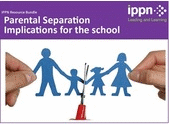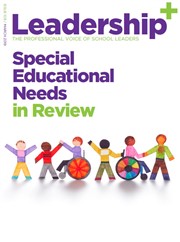Policy on Behaviours of Concern or Bespoke Behaviour Plan?
- Published: 19 May 2022
There has been some debate among school leaders, as to whether a BoM should frame and adopt a “Behaviours of Concern” policy, in respect of children whose behaviour is disruptive of teaching and learning in the classroom.
Every school has a Code of Behaviour/Discipline Policy and an Anti-Bullying Policy. These policies apply to every child in the school. Some children, for a variety of reasons, including having additional educational needs, can find it difficult to conform to the normal classroom rules.
Applying the above policies to these children, without reference to their individual needs, could be seen as unfair and likely be challenged as such. Schools are expected to make exhaustive efforts to deal with behaviours of concern. In essence, a school is expected to adjust the learning environment to suit the needs of the child, consider how this is to be done and carefully record all efforts to do so.
Looking at Our Schools states that schools are expected to ‘foster a commitment to inclusion, (and) equality of opportunity … establish an orderly, secure and healthy learning environment... and manage challenging and complex situations in a manner that demonstrates equality, fairness and justice’. To this end, schools must try everything possible to provide a safe and suitable learning environment for children and staff, including having a code of behaviour that takes account of individual needs.
The Department has set out the Continuum of Support framework to assist schools in identifying and responding to students’ needs. This framework recognises that special educational needs occur along a continuum, ranging from mild to severe, transient to long term and students require different levels of support depending on their identified educational needs. Using this framework helps to ensure that interventions are incremental, moving from class-based interventions to more intensive and individualised support and informed by careful monitoring of progress.
An Individual Behaviour Plan for a particular child would outline clearly
- the difficulties the child has in relation to teaching and learning in the school
- the triggers and behaviours of concern the child exhibits in the school environment and clearly states the school’s concerns about each behaviour
- the Behaviour Plan to address the behaviours of concern, specifically
- o Which behaviours are to be addressed and in what order
- o What indicators for success will apply to each behaviour
- a record of the child’s progress, or lack of progress, in relation to the Behaviour Plan
- a record of home / school communication in relation to the Behaviour Plan.
It is of the utmost importance that the child’s parents are fully involved in developing the Individual Behaviour Plan. Where parents refuse to become involved, their invitation and refusal to participate should be recorded. Full and open communication between home and school is the keystone to success. Where parents and school reach the conclusion that the school cannot cater for the needs of a particular child the above records and parental agreement will prove vital in securing a more appropriate placement for the child.
Every child is unique and behaviours of concern exhibited by a particular child are individual to that child. Behaviour policies that include a reference to Individual Behaviour Plans and take account of needs of individual children could help avoid the necessity of developing a separate Policy on Behaviours of Concern. The policy could include templates for developing an Individual Behaviour Plan, and emphasise the vital nature of effective communication with and involvement by parents / guardians.
School leaders who are considering these issues are advised to read IPPN's Resource Bundle on Behaviours of Concern



















































